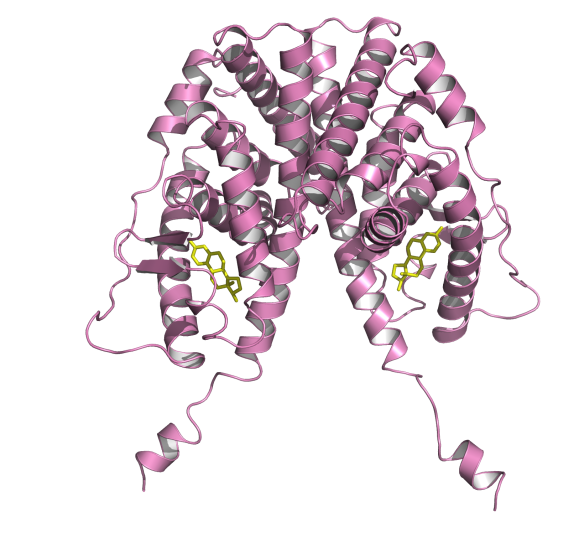"Let's talk about Sex" hormones – Part 1: The Oestrogen Receptor
What is it?
Oestrogen is a steroid hormone that circulates in the blood stream and can pass through the membrane of our cells. Here, oestrogen can bind to and 'activate' the oestrogen receptor. Once activated, the oestrogen receptor moves to the nucleus of the cell, where it acts as a transcription factor – that is, it can turn on the expression of certain genes that are important for development.
Oestrogen is known as the female sex hormone, as it stimulates growth of the female sex hormones, breasts and pubic hair, as well as maintaining the menstrual cycle. Oestrogen also plays an important role in mental health: low levels of oestrogen are correlated with low mood. In males, oestrogen is important for sperm maturation and also for a healthy libido.
The oestrogen receptor is expressed widely in different tissues – from the ovaries to the kidneys, brain and heart. It is expressed in both males and females, although it is present in much higher levels in females. Whilst oestrogen has a beneficial role in development and cell growth, it unfortunately can also cause cancer cells to proliferate. In fact, the oestrogen receptor has been implicated in many cancers: from breast to ovarian, colon and prostate cancers. Oestrogen is thought to drive increased cell division, eventually disrupting DNA repair, and cell death, thereby leading to tumour formation. This has led to the development of drugs for the treatment of cancer, including Tamoxifen, that block the action of oestrogen at the oestrogen receptor.
What does it look like?
The structure of human oestrogen receptor bound to estradiol (pdb code: 1A52) was determined in 1998 to 2.8 angstroms. The receptor functions as a dimer between two proteins (shown in pink). Each protein binds one molecule of oestrogen (yellow).

Image generated by Pymol (http://www.pymol.org/) (pdb code: 1A52).
Where does the structure come from?
The structure of the oestrogen receptor was first published in PNAS in 1998 (http://www.pnas.org/content/95/11/5998.long).






